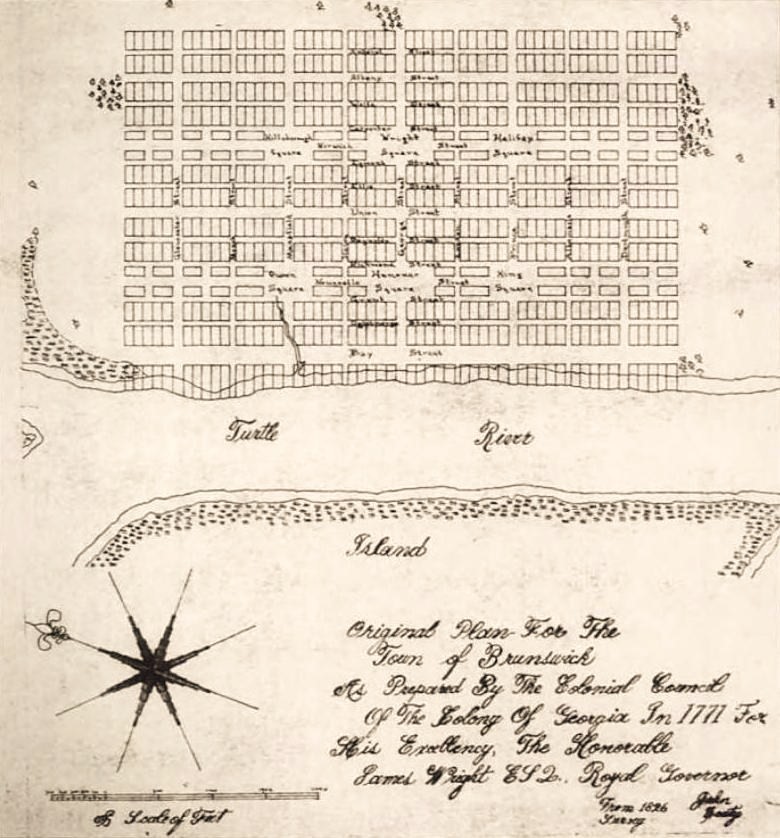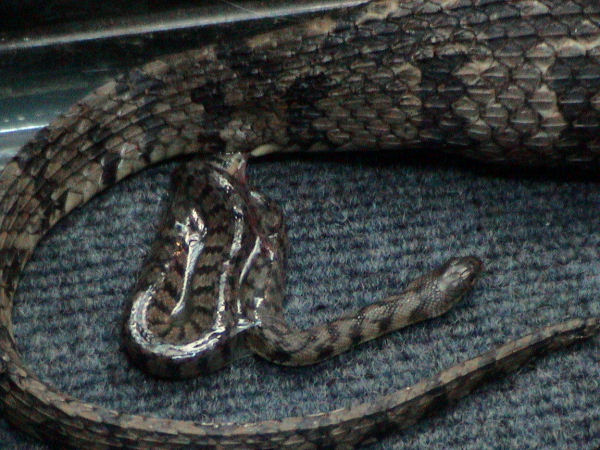|
Clark Quarry
Clark Quarry is a paleontological dig site in southern Georgia. The site first discovered fossils by the building of the Brunswick Canal in 1838-1839. Geology Clark Quarry is a cut and fill fluvial deposit overlying a marine sand, near Brunswick, Georgia, United States in Glynn County. The marine unit is characterized by a well-sorted, subrounded, low sphericity, fine- grained quartz arenite representing sediments of the Princess Anne Terrace. This site is in the pleistocene era on the geologic timescale. Fossils *Woodchuck–''Marmota monax'' *Bog lemming–''Synaptomys cooperi'' *Capybara–''Hydrochoeris holmesi'' *Florida or round-tailed muskrat–''Neofiber alleni'' *Rice rat–''Oryzomys palustris'' *Cotton rat–''Sigmodon hispidus'' *Harvest mouse–''Reithrodontomys'' *Columbian Mammoth-''Mammuthus columbi'' *Pleistocene Bison-''Bison latifrons'' *American Alligator-''Alligator mississippiensis'' *''Nerodia sp'' *Garter Snake-'' Thamnophis sp'' *Giant Ground Sloth-'' ... [...More Info...] [...Related Items...] OR: [Wikipedia] [Google] [Baidu] |
Brunswick, Georgia
Brunswick () is a city in and the county seat of Glynn County, Georgia, Glynn County in the U.S. state of Georgia (U.S. state), Georgia. As the primary urban and economic center of the lower southeast portion of Georgia, it is the second-largest urban area on the Georgia coastline after Savannah, Georgia, Savannah and contains the Brunswick Old Town Historic District. At the 2020 United States census, 2020 U.S. census, the population of the city proper was 15,210; Brunswick metropolitan area, the Brunswick metropolitan area's population as of 2020 was 113,495. Established as "Brunswick" after the German duchy of Brunswick-Lüneburg, Duchy of Brunswick–Lüneburg, the ancestral home of the House of Hanover, the municipal community was incorporated as a city in 1856. Throughout its history, Brunswick has served as an important port city; in World War II, for example, it served as a strategic military location with an operational base for escort blimps and a shipbuilding facility fo ... [...More Info...] [...Related Items...] OR: [Wikipedia] [Google] [Baidu] |
Bison Latifrons
''Bison latifrons'', also known as the giant bison or long-horned bison, is an extinct species of bison that lived in North America during the Pleistocene epoch ranging from Alaska to Mexico. It was the largest and heaviest bovid ever to live in North America. It thrived in North America for about 200,000 years, but became extinct some 20,00030,000 years ago, at the beginning of the last glacial maximum. Description Because only skulls and horns of this species have been found well preserved, the size of ''B. latifrons'' is currently not clearly known. Based on leg bones, the mass of ''B. latifrons'' has been estimated to be 25-50 percent larger than that of modern ''B. bison'', making it undoubtedly one of the largest ruminants ever. The known dimensions of the species are on average larger than any extinct and extant bovids, including both the American bison and the European bison, making it the largest known bovid. Overall, it was probably around in length and stood about ... [...More Info...] [...Related Items...] OR: [Wikipedia] [Google] [Baidu] |
Geography Of Glynn County, Georgia
Geography (from Greek: , ''geographia''. Combination of Greek words ‘Geo’ (The Earth) and ‘Graphien’ (to describe), literally "earth description") is a field of science devoted to the study of the lands, features, inhabitants, and phenomena of Earth. The first recorded use of the word γεωγραφία was as a title of a book by Greek scholar Eratosthenes (276–194 BC). Geography is an all-encompassing discipline that seeks an understanding of Earth and its human and natural complexities—not merely where objects are, but also how they have changed and come to be. While geography is specific to Earth, many concepts can be applied more broadly to other celestial bodies in the field of planetary science. One such concept, the first law of geography, proposed by Waldo Tobler, is "everything is related to everything else, but near things are more related than distant things." Geography has been called "the world discipline" and "the bridge between the human and th ... [...More Info...] [...Related Items...] OR: [Wikipedia] [Google] [Baidu] |
Odocoileus Virginianus
The white-tailed deer (''Odocoileus virginianus''), also known as the whitetail or Virginia deer, is a medium-sized deer native to North America, Central America, and South America as far south as Peru and Bolivia. It has also been introduced to New Zealand, all the Greater Antilles in the Caribbean (Cuba, Jamaica, Hispaniola, and Puerto Rico), and some countries in Europe, such as the Czech Republic, Finland, France, Germany, Romania and Serbia. In the Americas, it is the most widely distributed wild ungulate. In North America, the species is widely distributed east of the Rocky Mountains as well as in southwestern Arizona and most of Mexico, except Lower California. It is mostly displaced by the black-tailed or mule deer (''Odocoileus hemionus'') from that point west except for mixed deciduous riparian corridors, river valley bottomlands, and lower foothills of the northern Rocky Mountain region from Wyoming west to eastern Washington and eastern Oregon and north to northeast ... [...More Info...] [...Related Items...] OR: [Wikipedia] [Google] [Baidu] |
Equus Ferus
The wild horse (''Equus ferus'') is a species of the genus ''Equus'', which includes as subspecies the modern domesticated horse (''Equus ferus caballus'') as well as the endangered Przewalski's horse (''Equus ferus przewalskii''). The European wild horse known as the tarpan that went extinct in the late 1800s has previously been classified as a subspecies of wild horse (''Equus ferus ferus''), but more recent studies have cast doubt on whether those horses were truly wild or if they actually were feral horses or hybrids.Tadeusz Jezierski, Zbigniew Jaworski: ''Das Polnische Konik. Die Neue Brehm-Bücherei Bd. 658'', Westarp Wissenschaften, Hohenwarsleben 2008, Przewalski's horse had reached the brink of extinction but was reintroduced successfully into the wild. The tarpan became extinct in the 19th century but is theorized to have been present on the steppes of Eurasia at the time of domestication. However, other subspecies of ''Equus ferus'' may have existed and could ha ... [...More Info...] [...Related Items...] OR: [Wikipedia] [Google] [Baidu] |
Mastodon
A mastodon ( 'breast' + 'tooth') is any proboscidean belonging to the extinct genus ''Mammut'' (family Mammutidae). Mastodons inhabited North and Central America during the late Miocene or late Pliocene up to their extinction at the end of the Pleistocene 10,000 to 11,000 years ago. They lived in herds and were predominantly forest-dwelling animals. They generally had a browsing diet, distinct from that of the contemporary Columbian mammoth, which tended towards grazing. ''M. americanum'', the American mastodon, and ''M. pacificus'', the Pacific mastodon, are the youngest and best-known species of the genus. Mastodons disappeared from North America as part of a mass extinction of most of the Pleistocene megafauna, widely believed to have been caused by a combination of climate changes at the end of the Pleistocene and overexploitation by Paleo-Indians. History A Dutch tenant farmer found the first recorded remnant of ''Mammut'', a tooth some in weight, in the villag ... [...More Info...] [...Related Items...] OR: [Wikipedia] [Google] [Baidu] |
Megatherium
''Megatherium'' ( ; from Greek () 'great' + () 'beast') is an extinct genus of ground sloths endemic to South America that lived from the Early Pliocene through the end of the Pleistocene. It is best known for the elephant-sized type species ''M. americanum'', sometimes called the giant ground sloth, or the megathere, native to the Pampas through southern Bolivia during the Pleistocene. Various other smaller species belonging to the subgenus ''Pseudomegatherium'' are known from the Andes. ''Megatherium'' is part of the sloth family Megatheriidae, which also includes the similarly giant '' Eremotherium'', comparable in size to ''M. americanum,'' which was native to tropical South America, Central America and North America as far north as the southern United States. Only a few other land mammals equaled or exceeded ''M. americanum'' in size, such as large proboscideans (e.g., elephants) and the giant rhinoceros '' Paraceratherium''. ''Megatherium'' was first discovered in 178 ... [...More Info...] [...Related Items...] OR: [Wikipedia] [Google] [Baidu] |
Nerodia
''Nerodia'' is a genus of nonvenomous colubrid snakes commonly referred to as water snakes due to their aquatic behavior. The genus includes nine species, all native to North America. Description ''Nerodia'' species In biology, a species is the basic unit of Taxonomy (biology), classification and a taxonomic rank of an organism, as well as a unit of biodiversity. A species is often defined as the largest group of organisms in which any two individuals of ... vary greatly, but all are relatively heavy-bodied snakes, sometimes growing to 1.2 m (4 feet) or longer in total length. They have flattened heads, with small eyes that have round pupils, and keeled dorsal scales. Species like ''Nerodia fasciata, N. fasciata'' display distinct banding, whereas other species, like ''Nerodia erythrogaster, N. erythrogaster'', have blotching, and those like ''Nerodia rhombifer, N. rhombifer'' have diamond-shaped patterning. Most species are brown or olive green, or some combination ther ... [...More Info...] [...Related Items...] OR: [Wikipedia] [Google] [Baidu] |
Alligator Mississippiensis
The American alligator (''Alligator mississippiensis''), sometimes referred to colloquially as a gator or common alligator, is a large crocodilian reptile native to the Southeastern United States. It is one of the two extant species in the genus ''Alligator'', and is larger than the only other living alligator species, the Chinese alligator. Adult male American alligators measure in length, and can weigh up to , with unverified sizes of up to and weights of making it one of the largest members of the family Alligatoridae, alongside the black caiman. Females are smaller, measuring in length. The American alligator inhabits subtropical and tropical freshwater wetlands, such as marshes and cypress swamps, from southern Texas to North Carolina. It is distinguished from the sympatric American crocodile by its broader snout, with overlapping jaws and darker coloration, and is less tolerant of saltwater but more tolerant of cooler climates than the American crocodile, which is ... [...More Info...] [...Related Items...] OR: [Wikipedia] [Google] [Baidu] |
Mammuthus Columbi
A mammoth is any species of the extinct elephantid genus ''Mammuthus'', one of the many genera that make up the order of trunked mammals called proboscideans. The various species of mammoth were commonly equipped with long, curved tusks and, in northern species, a covering of long hair. They lived from the Pliocene epoch (from around 5 million years ago) into the Holocene at about 4,000 years ago, and various species existed in Africa, Europe, Asia, and North America. They were members of the family Elephantidae, which also contains the two genera of modern elephants and their ancestors. Mammoths are more closely related to living Asian elephants than African elephants. The oldest representative of ''Mammuthus'', the South African mammoth (''M. subplanifrons''), appeared around 5 million years ago during the early Pliocene in what is now southern and eastern Africa. Descendant species of these mammoths moved north and continued to propagate into numerous subsequent ... [...More Info...] [...Related Items...] OR: [Wikipedia] [Google] [Baidu] |
Georgia (U
Georgia most commonly refers to: * Georgia (country), a country in the Caucasus region of Eurasia * Georgia (U.S. state), a state in the Southeast United States Georgia may also refer to: Places Historical states and entities * Related to the country in the Caucasus ** Kingdom of Georgia, a medieval kingdom ** Georgia within the Russian Empire ** Democratic Republic of Georgia, established following the Russian Revolution ** Georgian Soviet Socialist Republic, a constituent of the Soviet Union * Related to the US state ** Province of Georgia, one of the thirteen American colonies established by Great Britain in what became the United States ** Georgia in the American Civil War, the State of Georgia within the Confederate States of America. Other places * 359 Georgia, an asteroid * New Georgia, Solomon Islands * South Georgia and the South Sandwich Islands Canada * Georgia Street, in Vancouver, British Columbia, Canada * Strait of Georgia, British Columbia, Canada ... [...More Info...] [...Related Items...] OR: [Wikipedia] [Google] [Baidu] |






